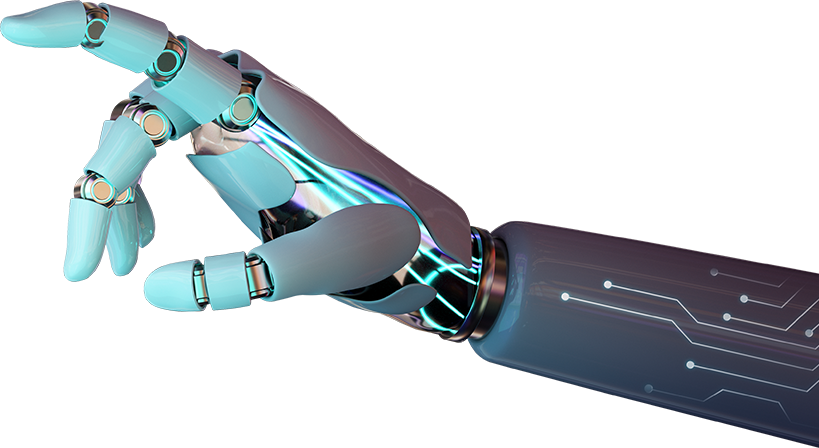In the fast-paced world of autonomous vehicles, understanding object detection is crucial. With cutting-edge technologies like machine learning and AI, these vehicles navigate complex environments. As the industry evolves, professionals seek reliable solutions for safety and precision. Dive into how these advancements transform the landscape, ensuring every journey is as smooth and secure as possible.
Table of contents
ToggleUnderstanding autonomous vehicle detection
Autonomous vehicle detection involves identifying and interpreting objects around a vehicle. Key technologies such as LiDAR, radar, and cameras play a crucial role. These systems work together to create a comprehensive view of the environment. Machine learning algorithms enhance detection accuracy, ensuring safety and efficiency. Data fusion combines sensor inputs to improve reliability. Understanding these elements is essential for developing robust detection systems capable of handling dynamic driving conditions. Embracing these technologies ensures vehicles navigate safely and effectively.
Key technologies in object detection
- LiDAR for precise 3D mapping
- Radar for object velocity measurement
- Computer vision for image analysis
Technologies like LiDAR, radar, and computer vision advance autonomous-vehicle-detection. These tools improve accuracy and ensure safety. Leading object detection frameworks integrate these technologies seamlessly, enhancing system capabilities.
The role of sensors and cameras
Sensors and cameras serve as the eyes of autonomous vehicles, enabling precise object detection. LiDAR, radar, and high-resolution cameras work together, ensuring vehicles identify obstacles accurately. This synergy enhances safety and reliability, crucial for real-world applications in autonomous-vehicle-detection systems.
Innovative solutions in object detection
Innovative solutions in autonomous-vehicle-detection include leveraging machine learning algorithms and AI to enhance object recognition. Techniques such as neural networks and deep learning refine detection precision. Companies utilise proficiency in TensorFlow and PyTorch to advance these systems. Real-time data processing enables swift decision-making, ensuring vehicles respond accurately to environmental changes. These technological strides promise improved safety and efficiency in autonomous vehicle operations.
Machine learning and AI advancements
Machine learning and AI propel autonomous-vehicle-detection by enhancing object recognition capabilities. These technologies empower vehicles to understand complex environments, ensuring precision and safety. Algorithms excel in training systems for identifying objects, adapting swiftly to dynamic conditions.
Real-time data processing techniques
Real-time data processing in autonomous-vehicle-detection requires robust algorithms and efficient computing power. Leveraging advancements in specialist vision computing methods enhances the ability to analyse sensor data swiftly. This ensures vehicles respond promptly to dynamic environments. Techniques like parallel processing and edge computing play crucial roles, offering seamless integration and reliable performance.
Challenges in integrating detection systems
Integrating detection systems into autonomous vehicles presents several challenges. Professionals face obstacles in ensuring these systems operate seamlessly and accurately in diverse conditions.
- Complexity of sensor fusion and data integration
- High computational demands for real-time processing
- Maintaining system reliability in varying environments
- Ensuring safety standards and regulatory compliance
Overcoming these challenges requires innovation and dedication. Ensuring reliability and accuracy remains paramount for successful integration.
Overcoming technical hurdles
Autonomous-vehicle-detection faces numerous technical hurdles. Overcoming these ensures improved safety and functionality. Key challenges include sensor fusion, data processing, and environmental adaptability. Addressing these obstacles requires strategic approaches.
- Integrating sensor fusion for accurate object detection
- Enhancing real-time data processing capabilities
- Improving algorithm adaptability to diverse environments
- Ensuring system robustness against weather conditions
Ensuring reliability and accuracy
Ensurer la fiabilité et la précision dans la détection des véhicules autonomes reste crucial. Les algorithmes doivent traiter les données en temps réel pour une reconnaissance d’objets sans faille. Des systèmes de capteurs redondants et des caméras haute résolution renforcent la robustesse. Les tests rigoureux et la validation continue garantissent que les systèmes répondent aux normes de sécurité. Fiabilité et précision forment la base de la confiance des utilisateurs dans les véhicules autonomes.
Case studies: practical applications
Real-world case studies highlight autonomous-vehicle-detection advancements. A leading car manufacturer integrated a robust object detection system, improving pedestrian safety by 30%. This system, utilising LIDAR and machine learning, identifies objects with impressive accuracy. Another example involves a tech startup enhancing lane-keeping features through AI-driven sensor fusion. These implementations demonstrate the importance of precise data processing for reliable performance. Lessons from these cases underscore the need for continual updates and integration with existing infrastructure, ensuring these innovations meet industry standards and drive future advancements.
Successful implementations in the industry
Companies like Waymo and Tesla have achieved remarkable success in autonomous-vehicle-detection. Waymo’s fleet uses LIDAR and advanced radar, enhancing object detection accuracy. Tesla, with its Full Self-Driving software, leverages AI to improve real-time decision-making. These implementations demonstrate how integrating sensors and machine learning can revolutionise vehicle safety. The industry benefits from these pioneering efforts, setting new standards for autonomous technology.
Lessons learned from real-world examples
Real-world examples of autonomous-vehicle-detection highlight crucial insights. The importance of data quality and robust algorithms emerges, ensuring precision and reliability. Successful cases reveal the need for continuous system updates to tackle evolving road conditions and environmental factors.
Future trends in autonomous vehicle detection
Emerging technologies promise to revolutionise autonomous-vehicle-detection. Quantum computing enhances data processing, while 5G connectivity improves real-time communication. Advanced LIDAR systems offer precise object recognition. Predictive analytics anticipate obstacles, boosting safety. Collaborations between tech firms and automakers accelerate innovation. Anticipate breakthroughs in AI algorithms for enhanced decision-making. The future holds vast potential for transforming vehicle autonomy and reliability.
Emerging technologies on the horizon
Emerging technologies promise to revolutionise autonomous vehicle detection. Key innovations include:
- Advanced LIDAR systems enhancing spatial awareness.
- 5G networks enabling faster data transmission.
- Quantum computing offering unprecedented processing power.
These advancements improve reliability and accuracy, paving the way for safer autonomous vehicles.
Predictions for industry advancements
The future of autonomous-vehicle-detection promises transformative advancements. Enhanced AI algorithms will drive precision and adaptability, while quantum computing might revolutionise data processing speed. The integration of 5G technology ensures seamless communication between vehicles and infrastructure, reducing latency issues. Expect sensors to become more sophisticated, allowing for better environmental awareness. Additionally, edge computing will facilitate real-time analysis at the vehicle level, reducing reliance on cloud-based systems. These innovations aim to bolster safety and efficiency, addressing current challenges while paving the way for fully autonomous transport solutions.
Questions and Answers
How do machine learning advancements improve autonomous-vehicle-detection?
Machine learning enhances detection by enabling vehicles to recognise objects with greater precision. Algorithms adapt to new scenarios, ensuring better decision-making and safety.
What are the main challenges in integrating detection systems?
Integration faces hurdles like sensor fusion complexity and software compatibility. Ensuring systems communicate effectively remains crucial for reliable performance.
What future technologies might influence autonomous-vehicle-detection?
Quantum computing and 5G technology hold promise. They could revolutionise real-time data processing, boosting efficiency and accuracy in object detection.






